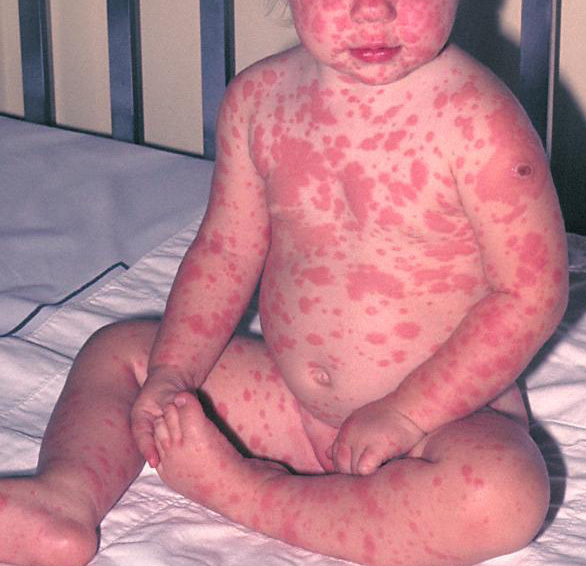Stevens-Johnson Syndrome Causes, Symptoms, Diagnosis and Treatment

What Is Stevens-Johnson Syndrome?
Stevens-Johnson syndrome is a life threatening skin condition. It is a form of toxic epidermal necrolysis. In this syndrome, cell death causes the separation of epidermis from the dermis.
It is thought to be a hypersensitivity (a set of undesirable reaction brought about by normal immune system) complex which affects skin and mucous membranes.
Causes range from taking certain medications to infections. It is usually an overreaction of the immune system to a seemingly mild infection. This leads to exhibition of blisters and peeling of the skin.
What begins as symptoms for infection invigorates into red painful rash. The top affected layer of the skin then dies and sheds away.
Prompt treatment is integral in preventing organs from attaining any lasting damage. Treatment focuses on culminating the underlying cause, relieving symptoms and minimizing complications.
Causes Of Stevens-Johnson Syndrome:
Stevens-Johnson syndrome arises due to the hyperactivity of the immune system.
Possible causes, which may trigger the immune system to overreact include:
- Medications
Vancomycin
Allopurinol
Valproate
Levofloxacin
Diclofenac
Etravirine
Isotretinoin
Fluconazole
Valdecoxib
Sitagliptin
Oseltamivir
Penicillins
Barbiturate
Sulfonamides
Phenytoin
Azithromycin
Oxcarbazepine
Zonisamide
Modafinil
Lamotrigine
Nevirapine
Pyrimethamine
Ibuprofen
Ethosuximide
Carbamazepine
Bupropion
Telaprevir
Nystatin
Radiation therapy - Infections
Upper respiratory infections
Otitis media
Pharyngitis
Epstein-Barr virus
Cytomegalovirus infections.
Diphtheria
Brucellosis
lymphogranuloma venereum
Mycobacteria
Tularemia
Typhoid
Herpes
HIV
Hepatitis
Pneumonia
Symptoms Of Stevens-Johnson Syndrome:
The following symptoms may be exhibited by affected individual:
- Facial swelling
- Tongue swelling
- Hives
- Skin pain
- A red or purple skin rash that spreads within hours to days
- Blisters on skin and the mucous membranes of mouth, nose, Eyes and genitals
- Shedding of skin
- Fever
- Sore mouth and throat
- Fatigue
- Cough
- Burning eyes
Diagnosis Of Stevens-Johnson Syndrome:
Stevens-Johnson syndrome can be diagnosed via:
- Medical history
- Physical exam
- Skin test
Treatment Of Stevens-Johnson Syndrome:
The following treatment options are available:
- Medications
To control infections
To relieve itching and painful rash
To reduce discomfort - Supportive care
Eye care
Fluid replacement, since skin loss results in loss of fluids]Wound care, for blisters
Related Articles:
Bursitis Causes, Symptoms, Diagnosis and Treatment
Folliculitis Causes, Symptoms, Diagnosis and Treatment
Carcinoid Syndrome Causes, Symptoms, Diagnosis and Treatment
Buerger’s Disease Causes, Symptoms, Diagnosis and Treatment
Shingles Symptoms, Causes, Diagnosis and Treatment
Chilblains Causes, Symptoms, Diagnosis and Treatment
Cradle Cap Causes, Symptoms, Diagnosis and Treatment
Contact Dermatitis Causes, Symptoms, Diagnosis and Treatment
Cold Urticaria Causes, Symptoms, Diagnosis and Treatment
Henoch Schonlein Purpura (HSP) Causes, Symptoms, Diagnosis and Treatment
Soft Tissue Sarcoma Causes, Symptoms, Diagnosis and Treatment
Pilonidal Cyst Causes, Symptoms, Diagnosis and Treatment
By : Natural Health News




